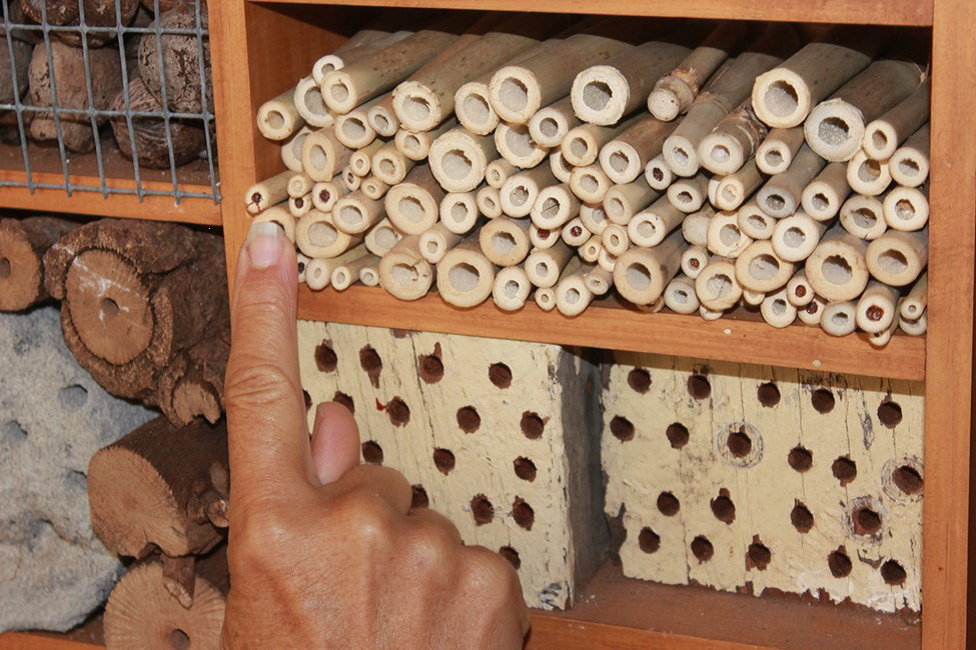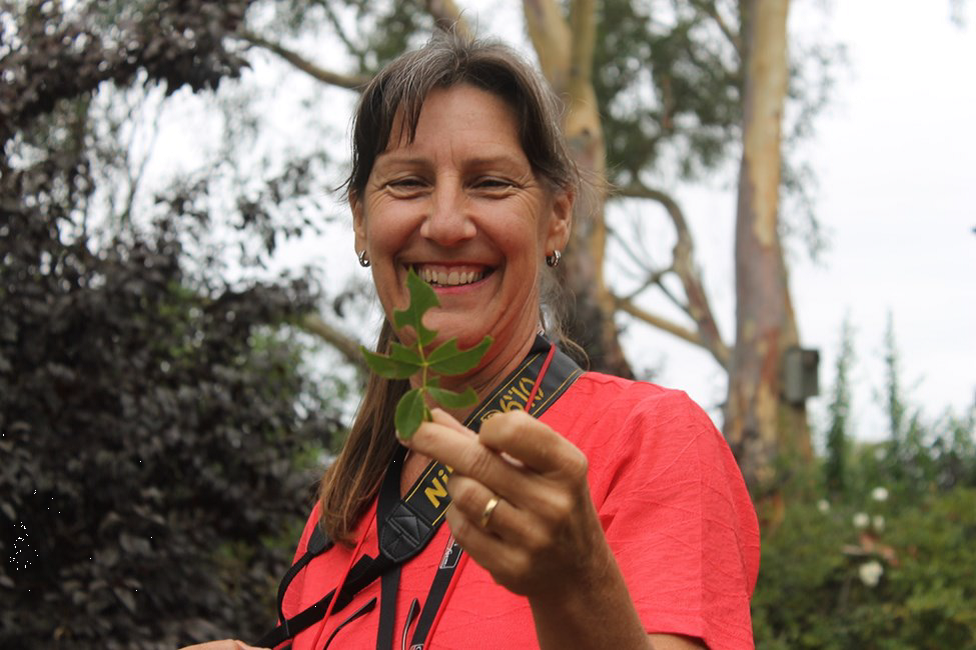Excursion March 2017
Thirteen members plus one visitor arrived at Faye Arcaro‘s four acre property “Botanic Obsession” in Jandakot on March 18 hoping to see lots of insect activity, especially native bees. Unfortunately the day was overcast and grey and activity was at a minimum. But Faye’s enthusiasm more than made up for the lack of insects.

Her ingenuity in providing nest sites, etc., for a variety of insects with cardboard, straws, stalks of agapanthus, garden pots, holes in wood, gave us all the impetus to view our ‘rubbish’ with new eyes. She showed us the tiniest of holes in xanthorrhoea flower stalks and even the mortar between the bricks of her house providing nests for a variety of bees.
Her garden is deliberately planted with plants that attract butterflies, bees, flies, wasps, etc. and Faye spends a lot of time there, often lying prone among her plants, observing, photographing, and recording the activity of insects. Noticing unusual activity around one plant where male flies were dancing around hoping to attract the eye of a female, she recorded it on video, posted it on line and Lo and Behold, a new specimen was added to the museum’s collection.
There are approximately 1500 native bee species in Australia, ranging in size from 2-24mm in length. Most are solitary, the females making individual nests in which to lay their eggs, but some are social, stingless and producing honey, albeit in small quantities. There are masked bees, resin bees, using the resin of gum trees to seal the entrances to their nests; leaf cutter bees, using leaves; reed bees, making holes in flower stalks.

There are many gaps in our knowledge about insect behaviour, but Faye with her keen observation, curiosity and her photography skills is filling some of them.
To learn more visit Faye’s Facebook page
Marilyn Myers
Photos: Rachel Green

